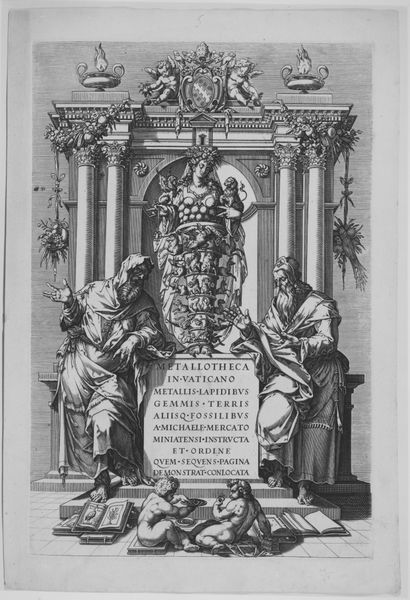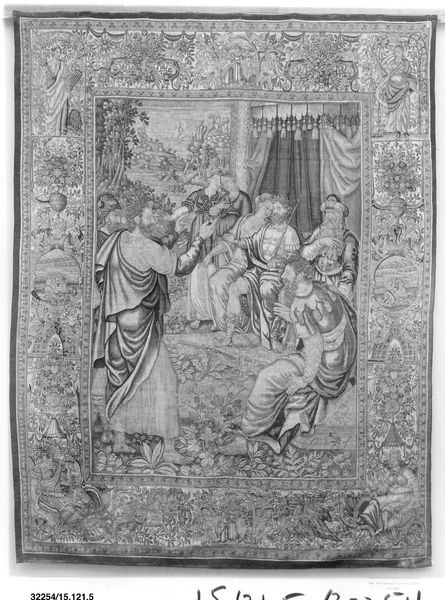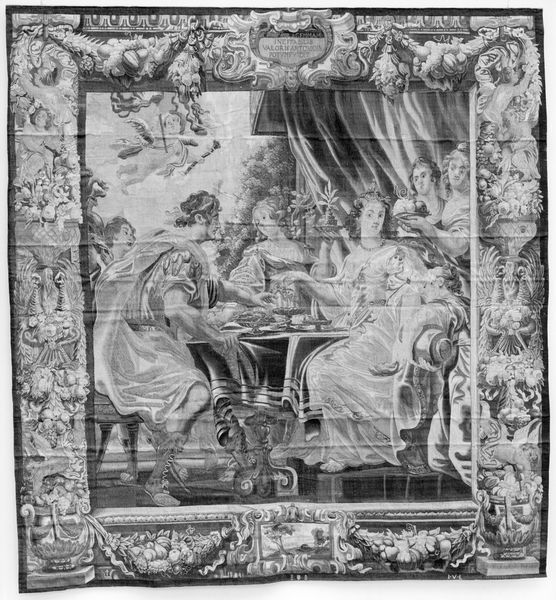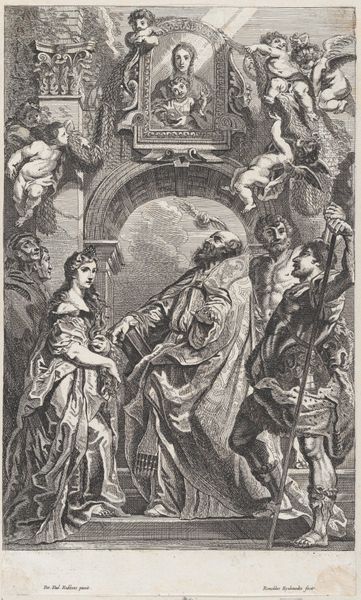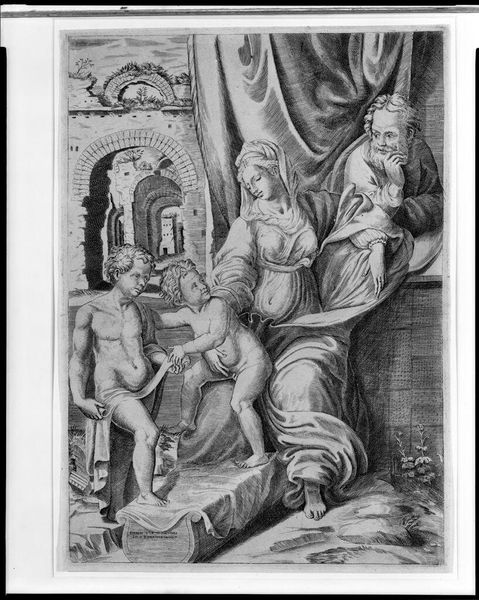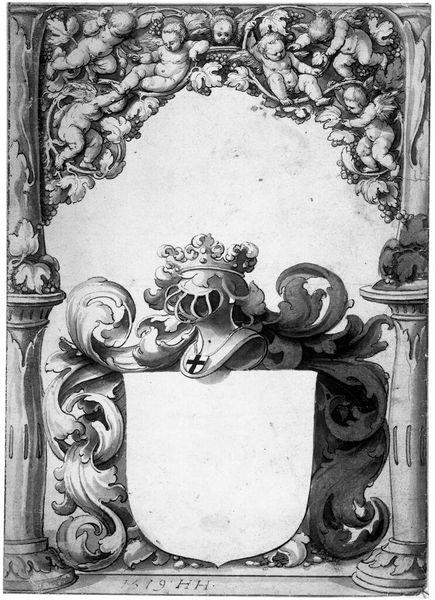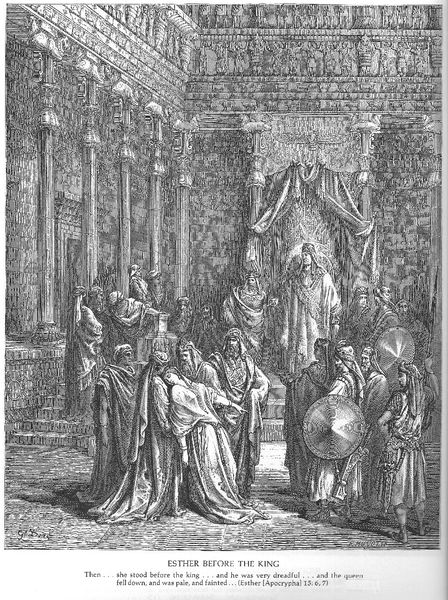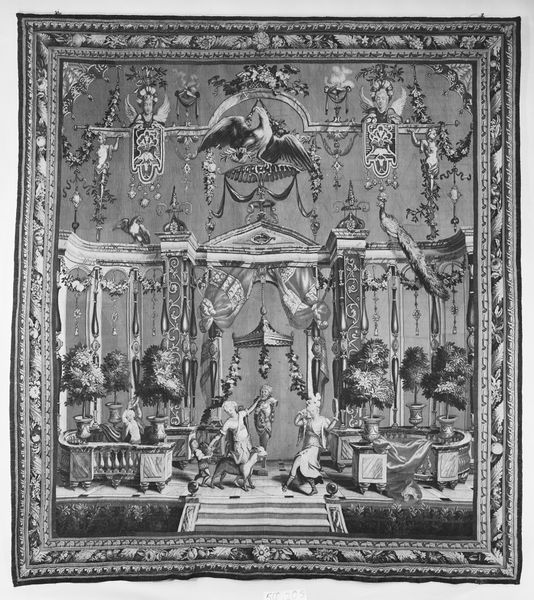
drawing, print, etching, engraving
#
drawing
#
allegory
# print
#
etching
#
mannerism
#
figuration
#
line
#
history-painting
#
engraving
Dimensions: sheet: 10 3/4 x 8 1/8 in. (27.3 x 20.6 cm)
Copyright: Public Domain
Curator: What strikes me immediately about this image is its palpable sense of unease; it feels as if a stage drama is about to spill over into something chaotic. Editor: Indeed. This etching, or perhaps an engraving, is titled "Allegory of Avarice, or Fraud," made sometime between 1530 and 1570. We attribute it to Dirck Volckertsz Coornhert. Let's delve into why you sense that coming storm. Curator: The figures are incredibly expressive, contorted even. The central seated figure, weighed down with finery, seems utterly vulnerable, preyed upon by both a demonic figure and some kind of winged, monstrous wolf holding up treasure, while at the top a semi nude figure stares into the middle distance, apparently oblivious of what transpires below. There’s such a layered symbolism that would resonate so clearly during this time of mercantile expansion. Editor: From my perspective, I notice the detailed lines produced by either the etching or engraving tools creating these tense figures. These dense crosshatchings build this intricate tableau of moral failing, avarice. This suggests multiple stages of development on a metal plate. Curator: Exactly! And think about the broader symbolism inherent in early modern prints and their reproducibility. Prints enabled these moral lessons to disseminate quickly, influencing cultural perceptions and shaping collective behavior regarding wealth and ethics on a far wider basis than paintings that would typically be affordable only by the wealthy. The central figure’s expression encapsulates a universal tension – the seduction and potential ruination of wealth. Editor: Interesting point; considering that printed images could easily make their way throughout a large city, that’s far more people that may observe a large scale moral painting only exhibited in one wealthy home. The very *materiality* of this printed allegory –its scale, the ease with which it’s shared – is essential to understanding its effectiveness. The use of visual tricks and allegories would be incredibly effective among common people too. Curator: Absolutely. And in this case, that symbolism persists through history, continuing to function as commentary on human greed and vulnerability, regardless of the specifics of economic context. Editor: By focusing on its material existence as an early form of mass media, we reveal some social context from the artwork in its time. Fascinating, don't you agree? Curator: Undeniably! Seeing it now allows a similar message to resonate with the viewer despite changes of place, time, and even culture, so even today that original message somehow rings true.
Comments
No comments
Be the first to comment and join the conversation on the ultimate creative platform.
